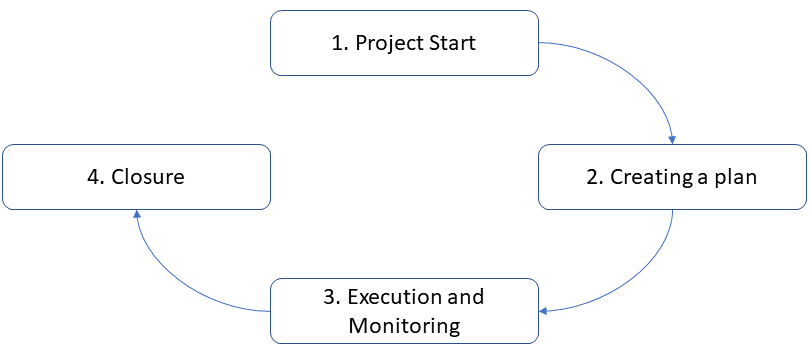Project management is the discipline that seeks to teach how to properly manage a project. But what does this really mean?
It means being able to correctly integrate tools, knowledge, techniques, and people to achieve the desired result.
Let’s start with what is meant by Project. A project consists of a set of activities that have well-defined characteristics. A project has the purpose of bringing value to the company (value can be turnover, visibility, awareness, sales, acquisition of new customers, etc.) in a determined time, with a defined budget (economic and resources).
From this, it follows that the task of the Project Manager (PM) is not only to manage the different tasks of the project but also to manage people, stakeholders, unforeseen events, and the budget.
Let’s, therefore, deepen why a PM is needed and how it brings value to the company. The PM focuses on the following aspects:
Focus on the customer
The customer can be internal or external to the company, regardless of this, the PM has the task of understanding their needs. Some typical questions to ask yourself and ask the customer are:
- What is the problem to be solved?
- How does the existing problem impact the company?
- Why does the problem emerge now?
- What is the desired output?
The important thing is NOT to focus on the solution but on the problem. Identify it correctly, and understand its impact and roots. Define what is the ideal situation for the customer. This is the WHY of the project.
Build a Great Team
The PM must know perfectly well the workgroup in order to put people in the best possible working conditions that increase the chances of success.
Encourage relationships and communication
Internal relationships, with other entities and with various stakeholders are fundamental in order to innovate and bring value to the project. Communication between the PM and various team members is equally important.
Project Management
All parts of the project have an impact on the big picture. All groups must be aware of the impact of their work, what they need to do, how, and with what timing. Escalation and organizational management skills play a crucial role in the success of the project.
Removing friction barriers
Any technological, practical, or people problem must be solved so that the various phases flow smoothly. The PM must be able to remove any obstacles, if necessary by innovating and involving other entities, funds, members, etc.
Responsibility
The responsibility for the project lies with the PM and this does not mean that he cannot delegate. Delegating responsibility to other team members, and providing them with the tools and authority to bring home individual tasks is another necessary aspect. The PM must enable decision-making.
Larger companies will require the PM to work on Cross-Functional groups. In this case too, the PM is required to have the following characteristics:
- Goals defined and clear to all team members
- Create a team with adequate skills
- Measure the progress of various tasks
- Recognize commitment → Fundamental and not always done
Typically the PM’s knowledge is T-shaped, a series of transversal knowledge and a strong skill on a single theme.
Having clarified the reason for creating a project and the role of the PM, let’s look at the basic structure of any project.
Given that, every project is different and has unique peculiarities, and that it must be managed as such, there are common characteristics in all projects.
Project Life-Cycle
Every project presents the following life cycle, of course, each one could have slightly different steps, but overall this is a good summarization.

Phase 1: Project Start
In the preliminary phase, all data relating to the project must have been collected and the following are defined:
- Budget
- Goals
- Team
- Timing
Phase 2: Creating a plan
There are several techniques for creating an effective work plan, in general Milestones are created for the project. The philosophies of thought (Methodologies) for managing a project are essential of two types:
- Linear: all steps of the project are carried out in sequence, each step is preparatory to the next and depends on the previous one. The tasks are more defined and rigid. Ex. Waterfall methodology.
- Iterative: these are more flexible projects with dynamics that allow tasks to be performed in parallel and to be more easily modified. Ex. Agile methodology.
Phase 3: Execution and Monitoring
In this phase, I monitor the various progress of the tasks that serve to reach the Milestones and consequently the goals of the project.
Phase 4: Closure
The closing phase should not be underestimated, it is necessary to:
- Close the project economically payment.
- Feedback from the customer and from/to the team.
- Project evaluation.
- One important thing is also to celebrate the completion of projects, especially if they are long and complex.


Comments